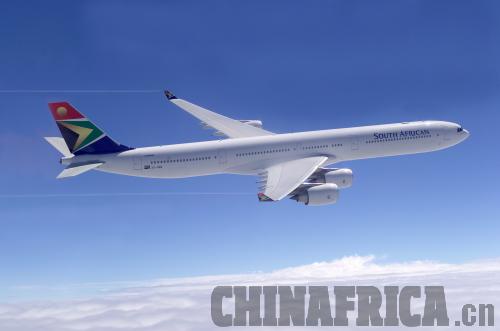|
 |
|
South African Airlines aircraft (COURTESY OF SAA) |
Competition or cooperation?
China's booming aviation market has laid solid groundwork for expanding Sino-African cooperation in this field.
Despite the global economic crisis cutting deep into the earnings of airlines, China's airline companies reported 35.1 billion yuan ($5.35 billion) in profits last year, which accounted for 60 percent of the total reaped by airline companies worldwide, according to the Civil Aviation Administration of China. In the coming five years, China will build more than 45 airports, bringing the total number to over 220 by 2015.
In addition, China is expected to contribute much to the growth of the international aviation industry. The International Air Transport Association indicates that by 2014, there will be 3.3 billion air travelers, up by 800 million from the 2.5 billion in 2009. Of the 800 million new travelers expected to fly by 2014, 360 million will travel on Asia-Pacific routes, and of those, 214 million will be associated with China. Meanwhile, the Chinese mainland and Hong Kong will account for a third of global freight volume growth over the period to 2014. The fast expanding market is attracting the attention of international airlines.
Mark Arxhoek, Regional Sales Director of Greater China Air France KLM, said that China is the favorite and profitable region for investors as well, adding that the Franco-Dutch carrier seeks to grow bigger in China.
Airlines like Air France KLM, Lufthansa and Continental are now the leading foreign carriers in China in terms of capacity and market share. Comparatively, African airlines have a smaller market, but they have implemented their own strategy to compete with their rivals. Seeing the rising number of Chinese visitors to Kenya, not only does the Kenya Airways provide Chinese customer-tailored services, such as in-flight Chinese meals and Chinese-speaking attendants, but has set up collaborations with a string of travel agencies, planning to soon offer competitive fares to more and more Chinese travelers who prefer to take a self-guided tour in Africa.
Wu favors the moves that the Nairobi-based airline has made to promote tourism in China. "There are over 50 African countries, each with their own specific strengths and advantages. By making full use of Kenya's advantages in rich tourism resources, the airline does well in operating routes that support and promote Kenyan tourism products."
The analyst also believed that the growing China aviation market has made more opportunities available for African nations, rather than competition.
"African airlines will take a larger market share if they are able to offer lower fares to Chinese travelers [than their rivals], given a large number of Chinese workers in Africa," Wu said.
In addition, China has in recent years been stepping up exports of civil and defense aircraft. Due to its low operational and maintenance costs, the Chinese-made regional jet, Modern Ark 60, has sold quite well in Africa since 2005. Along with Africa's growing demand for aircraft in the next two decades, Wu predicted that Chinese aircraft companies would receive more orders from Africa. "[Exports of aircraft] I think will become another important aspect of Sino-African cooperation in the aviation industry." |